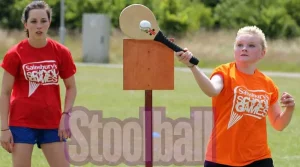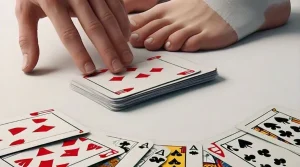The Ultimate Old Maid Game Rules: Tips for Winning Every Time
Are you struggling to recall the Old Maid game rules or explain them to your kids? You’re not alone! This classic card game has entertained families for generations. Yet, its simple but competitive nature can sometimes be tricky to explain, especially if it’s been a while since you last played. For parents, keeping kids engaged with easy-to-understand rules is key. This guide simplifies everything you need to know, whether you’re curious about the game’s origins or looking for fresh ways to play. Discover a brief history, clear instructions, and exciting variations to revive your love for this timeless favorite.
What Is the Old Maid Game?
Old Maid is a card game dating back to the 17th century. It’s simple, fun, and requires players to avoid ending up with the “Old Maid” card to win. Traditionally played with a standard deck of cards, it’s adaptable for kids as young as 4, and adults can enjoy it too. The game is perfect for family gatherings, parties, or even a cozy afternoon indoors.
Old Maid Game Rules and Gameplay
This easy-to-learn game involves basic rules and strategy. Here’s a breakdown of how to play:
Setting Up the Game
- Players: Ideal for 3–6 players; a larger group makes the game more engaging.
- Deck of Cards:
- Standard Deck: Remove one queen, leaving 51 cards. The missing queen becomes the “Old Maid.”
- Special Deck: Alternatively, use a dedicated Old Maid set with a specific “Old Maid” card.
- Shuffling and Dealing: Shuffle and deal all cards to players. It’s normal if some players get more cards than others.
Objective of the Game
The goal is to match all cards in your hand while avoiding the unpaired “Old Maid” card. The last player holding the Old Maid loses.
Gameplay
- Forming Pairs: Each player examines their hand and pairs any matching cards (same rank). Paired cards are placed face-down on the table.
- Taking Turns: The player to the dealer’s left begins by drawing a card from the hand of the player on their right. If the drawn card pairs with one in their hand, they place the pair down. Otherwise, they keep it.
- Continuing Play: Turns continue clockwise as players draw from their neighbors, matching and discarding pairs.
- Ending the Game: Play ends when all pairs are matched, except for the Old Maid, held by the “loser” of the game.
Winning and Losing
- Losing: The player left with the Old Maid card is the game’s “loser.”
- Winning: All other players are considered winners. Some versions even name the last player to match all cards the “Grand Winner.”
Key Rules Recap
- Card Matching: Players match cards of the same rank to form pairs.
- Old Maid Card: Remove one queen from a standard deck or use a special “Old Maid” card.
- Drawing Cards: Players take turns drawing a card from their neighbor’s hand until all pairs are matched.
- Last Card Standing: The player with the unpaired Old Maid card loses.
Variations of the Game
To add excitement, try these fun variations:
- Speed Mode: Set a time limit (e.g., five seconds per turn) to add urgency and make gameplay faster.
- Double Trouble: Remove two queens, creating two “Old Maid” cards. The game continues until both Old Maids are left, adding a twist.
- Reverse Mode: Here, players aim to keep the Old Maid. The player holding it at the end wins, making bluffing and strategy essential.
Origins of the Old Maid Game
The origins of Old Maid are fascinating, likely tracing back to 17th-century European gambling games, where players determined a “loser” who would pay a penalty. Here’s a brief history:
- Early Beginnings: The term “Old Maid” dates to 18th-century England, describing an unmarried woman, often marginalized by society.
- Evolution to Card Game: In 1831, American author Eliza Leslie published the first known rules for Old Maid, presenting it as a children’s game with variations for girls (Old Maid) and boys (Old Bachelor). It likely evolved from the German game “Black Peter.”
- Victorian Era Popularity: The game gained popularity in Victorian-era Europe and America, reflecting social norms about marriage.
- Gameplay Evolution: Originally played with a 52-card deck, one queen was removed to create the “Old Maid.” By the late 19th century, decks with humorous images of “Old Maids” appeared, adding a playful visual element.
Wrap UP
Old Maid is more than a game of chance—it’s a test of observation and bluffing. By understanding the rules and using keen observation, you can become an Old Maid expert. Whether you’re playing with kids or adults, remember to have fun, stay alert, and enjoy the friendly rivalry that makes Old Maid a beloved classic.
FAQ:
- How to win at Old Maid? Focus on observing opponents and avoiding the Old Maid card as much as possible.
- What are the rules for Old Maid? Match pairs, avoid the Old Maid, and ensure everyone discards all paired cards.
- Why is it called Old Maid? Historically, it reflects old societal views about unmarried women.
- What happens if you run out of cards? Once a player discards all their pairs, they’re out for the rest of the game.
- What is the objective of Old Maid? To match all pairs while avoiding the unpaired Old Maid card.







